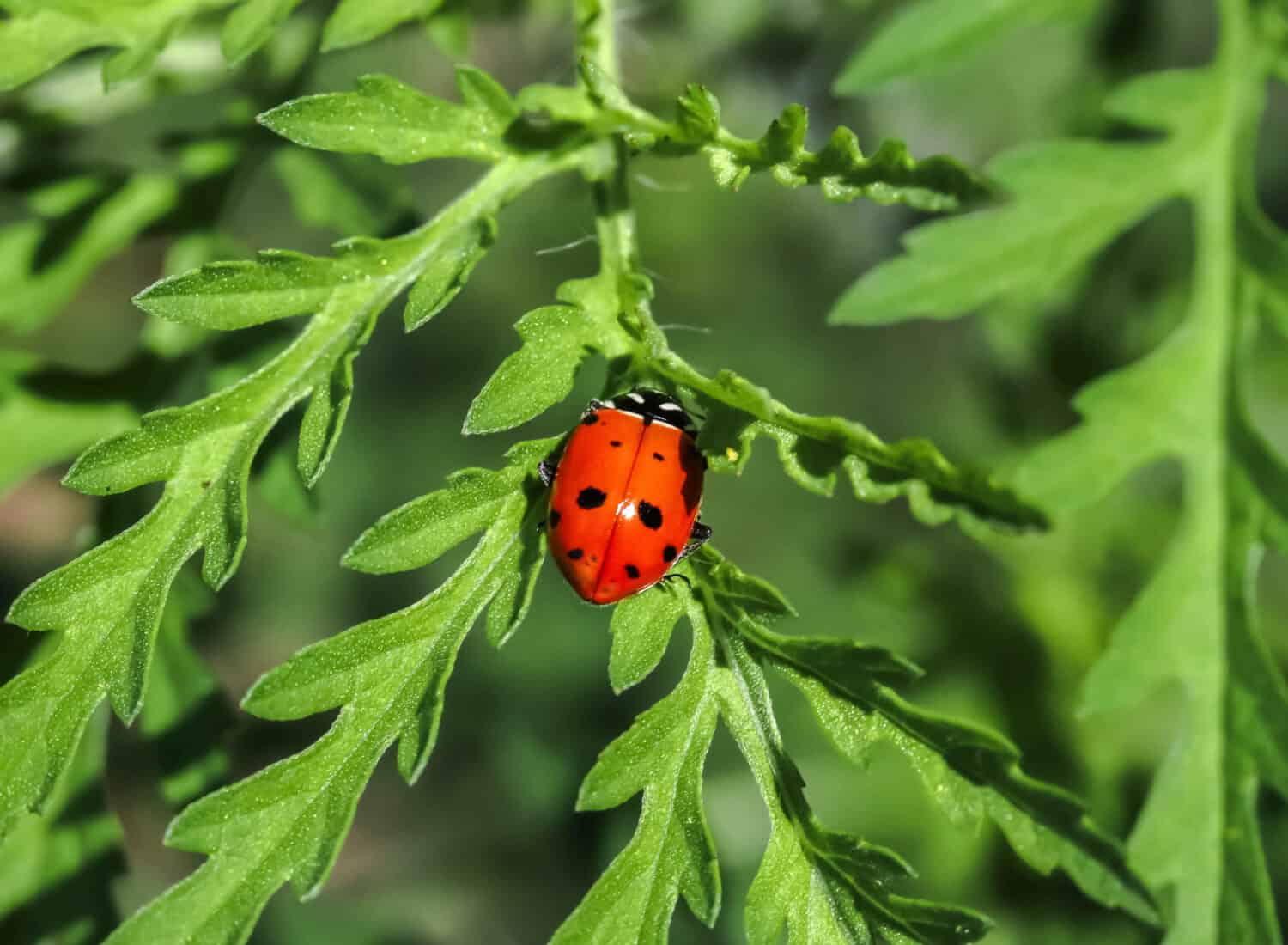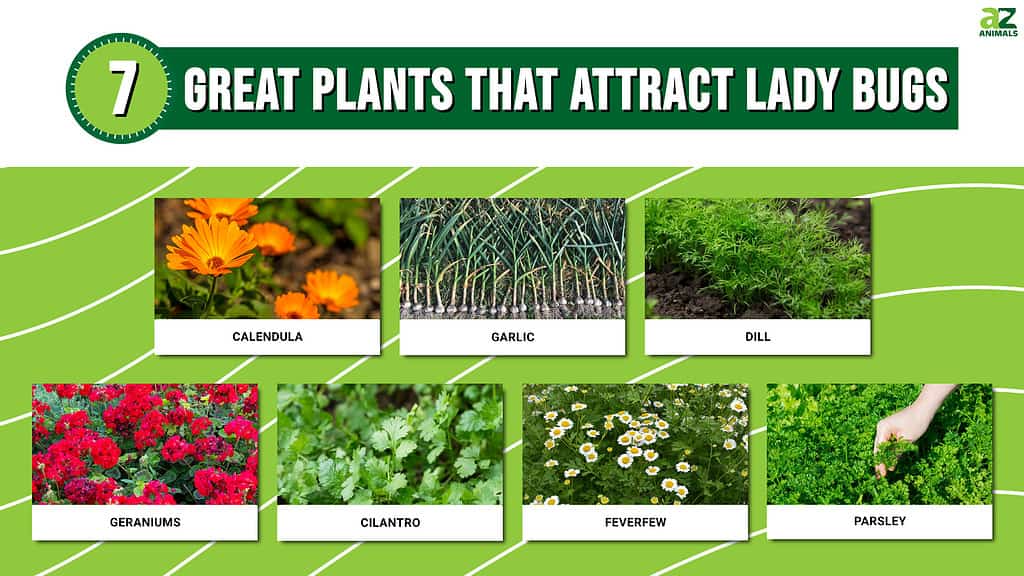
Who doesn’t love ladybugs? Gardens are transformed into little ecosystems overflowing with balance and harmony thanks to these delicate, polka-dotted creatures. And that’s because ladybugs are known for their ravenous hunger for garden pests. They also develop a delicate alliance with some plant species.
Ladybugs, commonly referred to as ladybirds or lady beetles, have a purpose beyond just beautifying our landscapes with their appearance. They are the ideal eco-warriors, hunting aphids, mites, and other pests that eat plants with unmatched accuracy. But what plants do ladybugs prefer?
Let’s take a look at some ladybug plants that would be the perfect addition to any pollinator-friendly garden.
1. Calendula
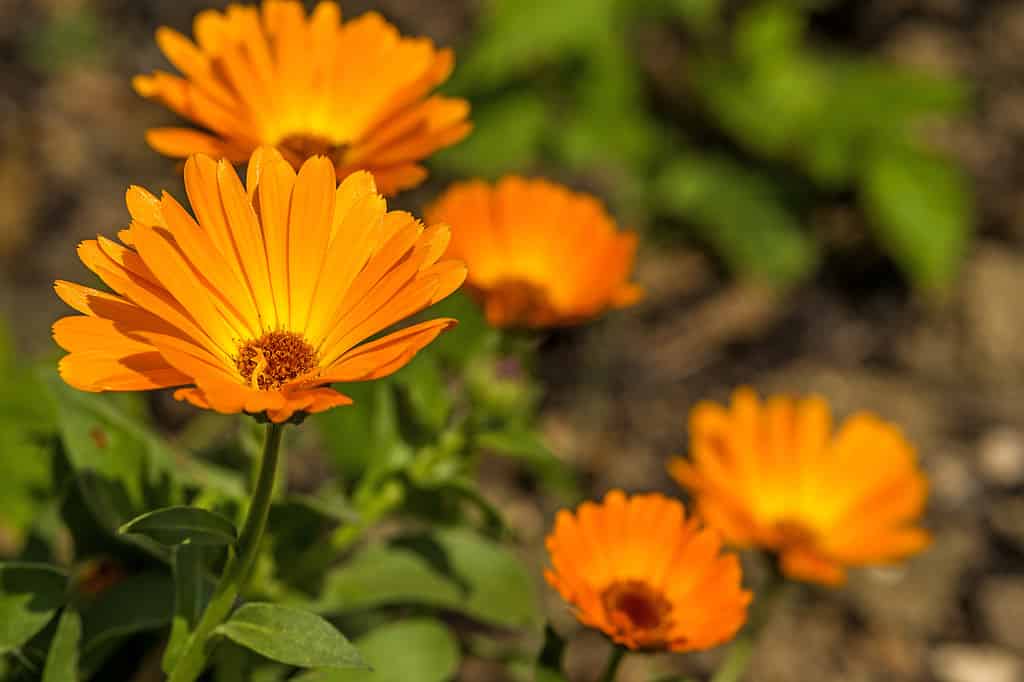
Calendula (pictured) are aesthetically pleasing in addition to being beneficial for gardens.
©iStock.com/HansJoachim
Calendula, sometimes called marigold or coneflower, is a superb plant for luring ladybugs and promoting a healthy garden environment. Many plant pests, such as aphids, mites, and mealybugs, are naturally preyed upon by ladybugs. By planting calendula in your garden, you may attract ever-helpful ladybugs by providing a welcoming environment.
Calendula’s vivid colors and nectar-rich blossoms draw ladybugs to them. Calendula’s vivid orange and yellow flowers serve as beacons, drawing ladybugs to the plant. When they arrive, the plentiful nectar provides a critical food supply that sustains their numbers and encourages them to remain.
Calendula also has delicate, umbrella-shaped blossoms that serve as practical ladybug landing pads. These landing places provide shelter from the elements while allowing ladybugs to rest and reproduce.
By consuming hazardous pests, ladybugs help maintain a natural equilibrium in your garden. Calendula can be used to entice these ferocious predators, lowering the need for chemical pesticides and promoting a healthier and more sustainable garden environment. This plant can be a lovely addition to any gardener looking to encourage biodiversity and natural pest management because of its capacity to entice ladybugs.
2. Garlic
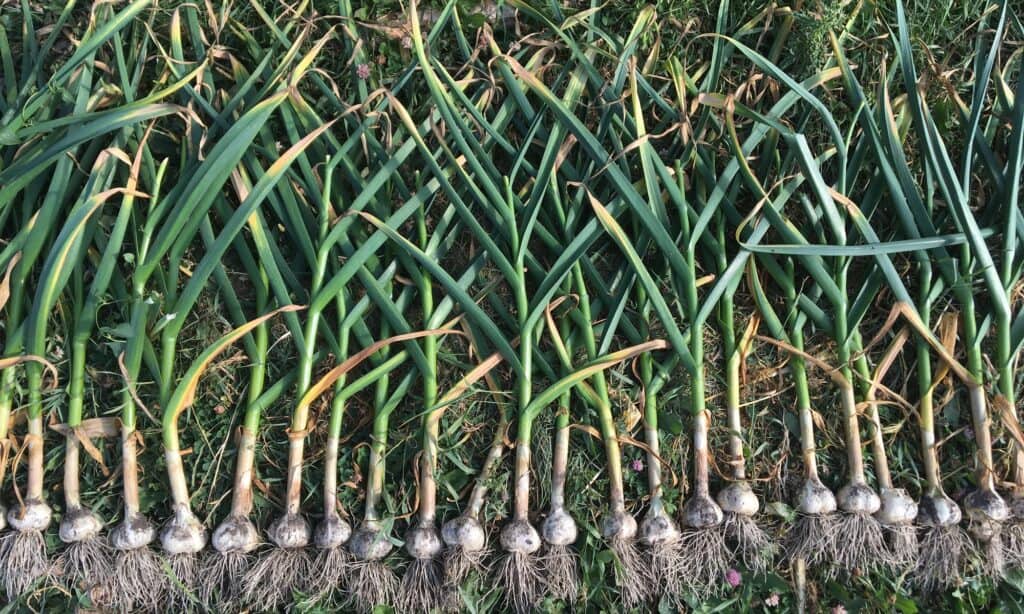
Garlic (pictured) repels aphids but attracts ladybugs.
©amandalala123/Shutterstock.com
Garlic is generally known for its culinary use and health advantages, but it also makes a wonderful plant for luring ladybugs to your garden. Ladybugs are really helpful insects that are essential for organic pest management.
Small, aromatic blooms that discharge pollen and nectar are first produced by garlic plants. These floral resources provide a source of food for both adult ladybugs and their larvae, which is why ladybugs are drawn to them.
Ladybugs love to eat aphids, and garlic is believed to ward off these sap-sucking parasites. Garlic can help you establish an atmosphere that repels aphids, which will encourage ladybugs to gather in your yard near the other plants that they move to. Aphid-prone plants like roses or vegetables like lettuce and tomatoes can be deliberately planted next to garlic to avoid being damaged. Lady bugs are drawn to places where there are lots of aphids, and the presence of garlic nearby will make such places even more alluring to them.
3. Dill
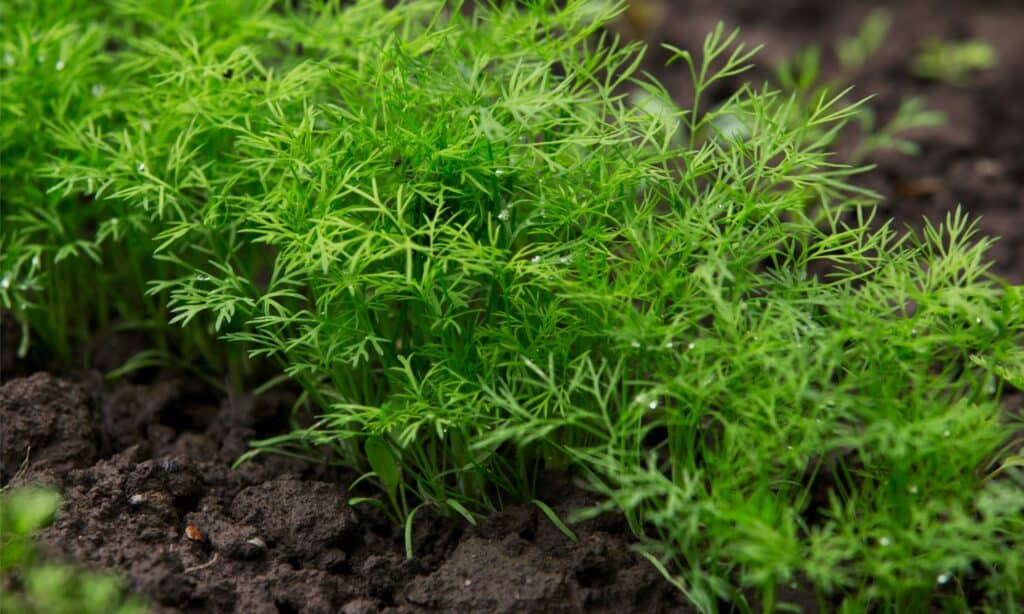
Dill (pictured) is a great culinary herb in addition to being a ladybug attractor.
©iStock.com/DevidDO
Dill is a superb plant for luring ladybugs to your garden because of its delicate leaves and fragrant properties. This herb is appreciated for attracting these beneficial insects for several reasons.
Small, clustered blooms that are produced by dill plants are known to have a lot of nectar. These nectar-rich blooms are a major draw for ladybugs, who use them as a crucial source of food. Dill is a very potent plant that attracts ladybugs, giving them a cause to come to and stay in your yard.
Dill’s feathery foliage is a perfect place for ladybugs to relax, deposit their eggs, and find refuge. Its delicate leaves shield them from predators and create a cozy home for ladybugs to thrive. Dill is also known to attract aphids, which ladybugs prefer as a food source. Aphids on dill plants operate as a beacon, luring ladybugs to eat these crop-destroying insects.
4. Geraniums

Geraniums (pictured) are quite visually stunning and work well in flower gardens.
©Jane Nadezhina/Shutterstock.com
Geraniums are a great option for luring ladybugs to your yard because of their colorful blossoms and scented leaves. These lovely flowers offer stunning blooms in a variety of hues, including red, pink, and white, which serve as ladybug beacons. Lady bugs are drawn to the geranium plant by its vibrant colors and distinctive patterns on its petals. Plus, geraniums are just plain pretty and a great flower to have around!
The nectar and pollen that geranium blooms produce attract ladybugs as well. While their larvae can eat the pollen, the nectar is a nourishing food source for adult ladybugs. Just as well, geraniums provide ladybugs with a dependable and safe home. Lady bugs can relax, lay their eggs, and seek shelter from bad weather thanks to the plant’s thick foliage.
5. Cilantro
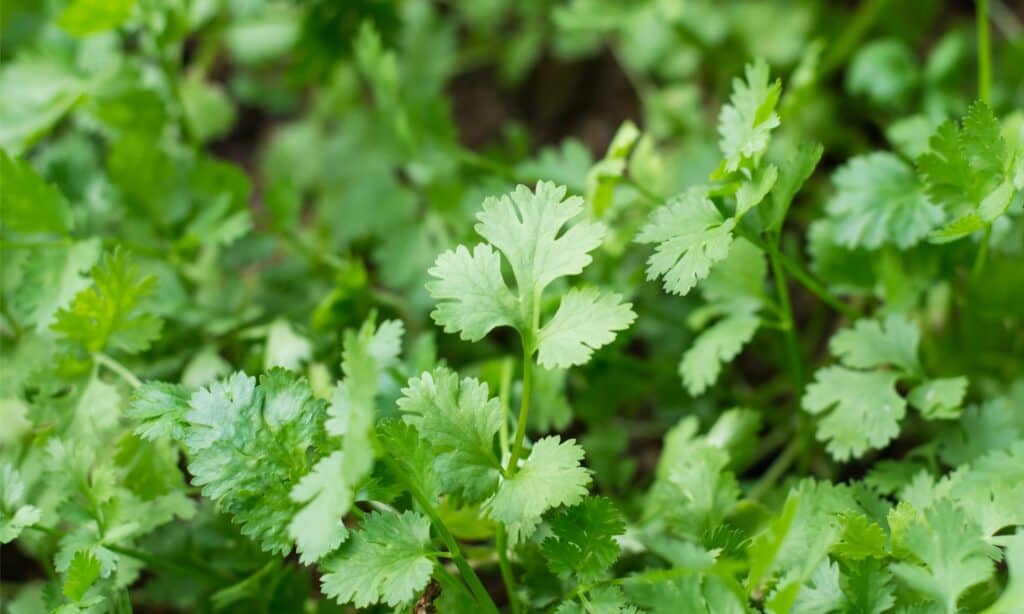
Cilantro (pictured) is also known as coriander.
©iStock.com/Tevarak
The white, tiny, umbrella-shaped blossoms that cilantro produces are full of nectar. Ladybugs are drawn to these blossoms and can use the plant as a vital food source. Adult ladybugs are encouraged to remain in your garden and grow a flourishing colony by the presence of cilantro.
Aphids are also reported to be drawn to cilantro plants. Since cilantro can become infested with aphids, ladybugs are attracted to the plant to eat these garden pests. As an easily accessible food supply, cilantro is an alluring location for ladybugs looking for sustenance.
Just as well, the lacy leaves of cilantro make for a perfect place for ladybugs to rest, mate, and lay eggs. The lush vegetation provides cover and defense against predators while fostering a favorable environment for ladybugs to flourish.
6. Feverfew
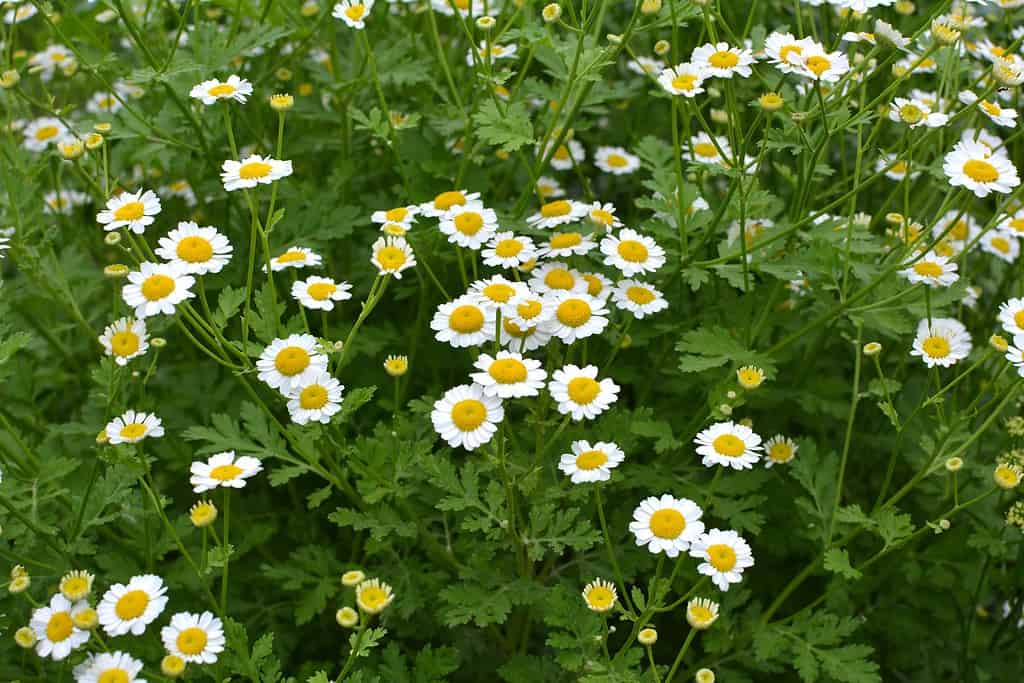
Feverfew (pictured) looks quite similar to daisies, though they are very different plants.
©Orest lyzhechka/Shutterstock.com
With its delicate, daisy-like blooms and fragrant leaves, feverfew is an excellent plant to use in your yard to draw ladybugs. Numerous tiny, white flowers with golden centers are produced by feverfew plants in the spring. The blossoms’ abundant pollen and nectar attract ladybugs, giving them access to a crucial food supply for both adults and larvae.
Just as well, ladybugs enjoy the pungent aroma that feverfew has to offer. Ladybugs are drawn to gardens by the fragrant foliage’s distinct and strong scent, which encourages them to explore and stay there.
Feverfew not only attracts ladybugs but also deters pests from your garden. Aphids are naturally discouraged by the plant’s strong perfume. While ladybugs enjoy eating these pests, it’s usually better to keep them out of your garden entirely to avoid crop damage.
7. Parsley
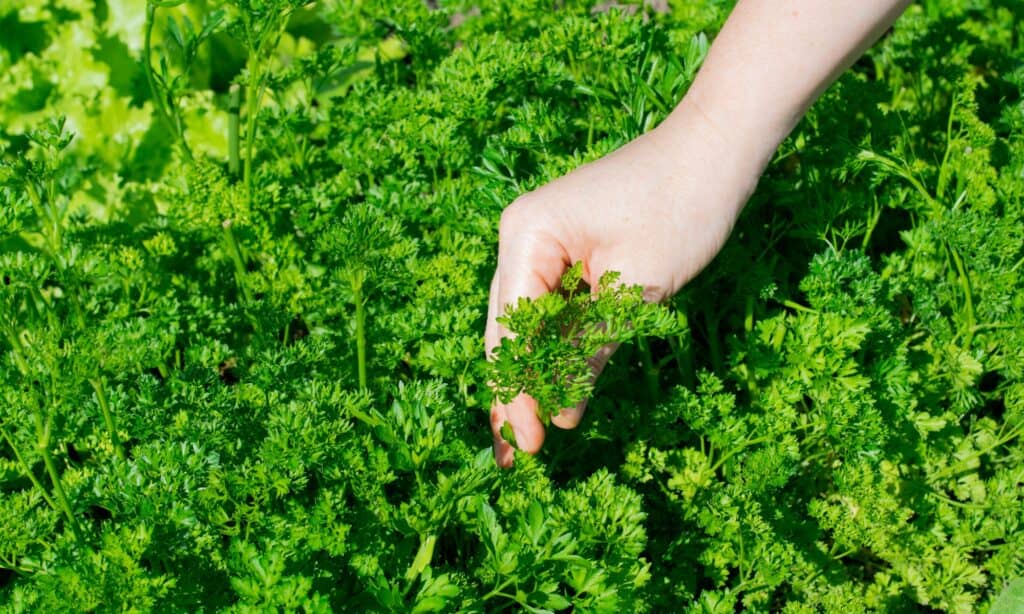
Parsley (pictured) comes in both curly and flat-leaf varieties.
©iStock.com/Oksana Chaun
The rich leaves and vivid green color of parsley make it a great plant for luring ladybugs to your yard. Ladybugs are particularly drawn to the clusters of small, white flowers that parsley produces. These blooms exude nectar, a crucial source of nourishment for ladybugs.
Aphids, which ladybugs prefer to eat, are also known to be attracted to parsley. Parsley makes for an enticing location for ladybugs looking for food by offering a conveniently accessible food supply of both nectar and aphids.
Parsley also provides ladybugs with a useful home. The thick vegetation offers cover and safety, enabling ladybugs to complete their full life cycle in one location. Ladybugs can survive and build a colony in your garden thanks to the parsley’s luxuriant leaves.
It’s also worth noting that parsley is a versatile herb that can be used in cooking to enhance the flavor and appearance of food. Not only do you get to enjoy having ladybugs in your garden, but you can also enjoy the culinary delight of having fresh parsley readily available.
How cool are these ladybug plants? With just a few plants from this list in your garden, you’ll notice an uptick in ladybug visitors.
7 Great Plants That Attract Lady Bugs
| Plant | |
|---|---|
| 1 | Calendula |
| 2 | Garlic |
| 3 | Dill |
| 4 | Geraniums |
| 5 | Cilantro |
| 6 | Feverfew |
| 7 | Parsley |
Thank you for reading! Have some feedback for us? Contact the AZ Animals editorial team.

